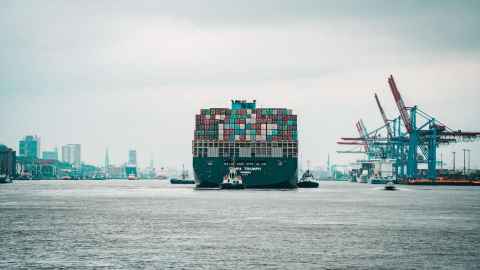Resilience and robustness in the supply chain

Everyone speaks about the resilience of supply chains these days. That is not surprising, given the disruptions induced by the pandemic over the last two and half years!
But what is resilience? Is it the same as robustness? Is it preferable for supply chains to be resilient, robust, or both? Let’s get to the (etymological) root of the matter.
First robustness. Robustness comes from the Latin adjective “robustus,” meaning hard, firm, or solid (from a type of oak with strong timber). By the same token, robust supply chains should withstand shocks and be (relatively) unaffected by disruptive events.
On the other hand, resilience originates from the Latin verb “resilire,” which means to bounce back or rebound. In contrast to a robust supply chain, a resilient supply chain should quickly recover from a disruption, possibly in a new configuration or a network structure.
Thus, robustness implies better performance during a disruption, while resilience is more about quick recovery following a disturbance.
Accordingly, the measures of robustness and resilience are also somewhat different. For example, while service level (SL) during disruption is a good measure of robustness, time-to-recovery (TTR) is a good measure of resilience that captures the duration it takes for a firm to recover from a disruption.
Both robustness and resilience are desirable traits for a supply chain, but one could be more important than the other for an organisation.
If supply chains are short and the likelihood of being affected by global events is low – robustness might be more critical. However, resilience is more important if supply chains are spread out and vulnerable to disruptions.
A recent podcast, Supply Chain Brain, discussed five essential steps for building resilience in a supply chain.
In no particular order:
- Ensuring visibility of multi-enterprise supply chains.
- Agile network design that allows for pivoting.
- Proactive risk-assessment.
- Building strategic buffers with a combination of inventory, capacity, and capability.
- Ensuring that parameters used in planning are not deterministic, as deterministic parameters can unwittingly set a firm up for disruption.
Despite the high interest in resilient supply chains today, will businesses revert to the old ways of low-cost supply chains with risky practices, such as single sourcing from a different continent, when the pandemic’s effects won’t be as fresh in the collective memory?
After all, markets typically reward short-term performance. Still, building resilience often involves adding costs in the near term to avoid a potential catastrophe that might not happen until several years later.
Maybe it’s apt to conclude with a light-hearted and philosophical note, a quote from American historian Henry Adams: “Chaos was the law of nature, order was the dream of man.”
Subhamoy Ganguly is a senior lecturer in the Department of Information Systems and Operations Management at the University of Auckland Business School.